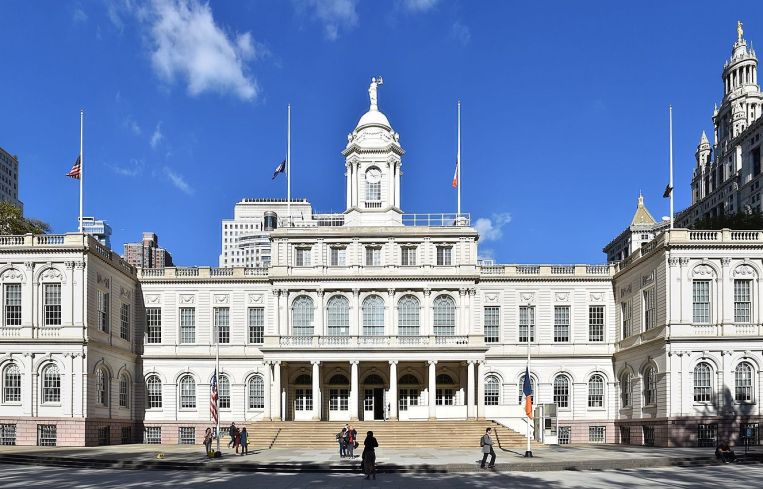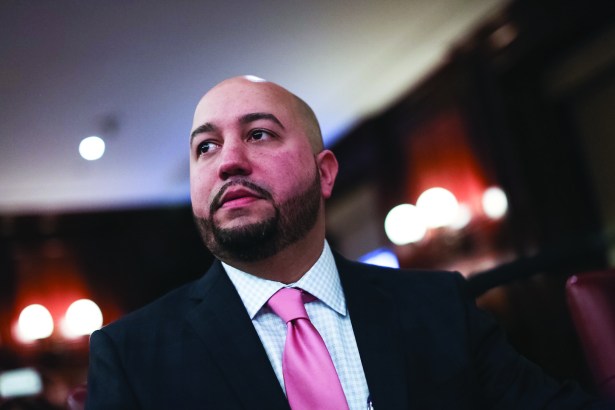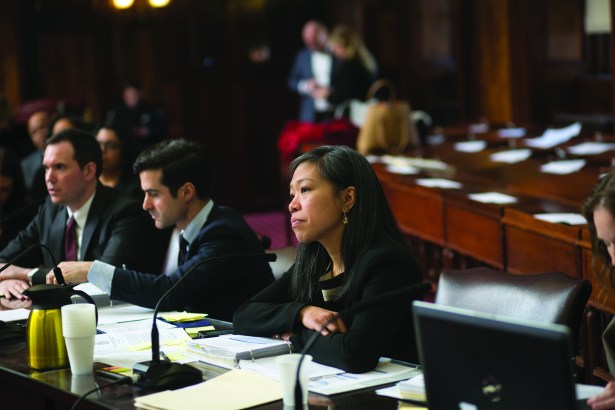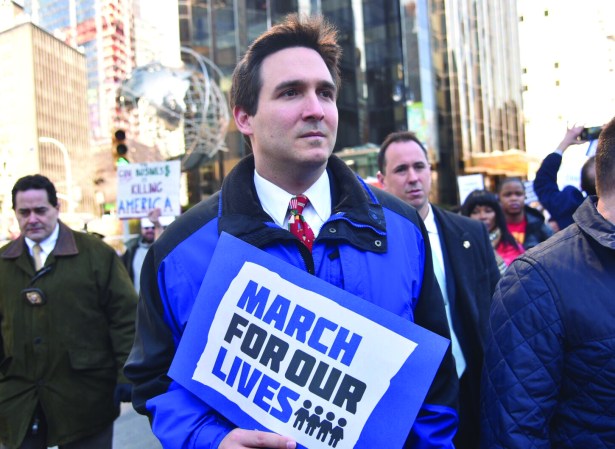Power Politicians: The Officials Who Call the Shots on Real Estate
By Rebecca Baird-Remba April 25, 2018 11:30 am
reprints
Developers and landlords have always been at the mercy of city politicians, and Mayor Bill de Blasio’s ambitious housing agenda has further highlighted the tensions between real estate interests and City Hall.
While only a select few elected officials get a place on the Power 100, there are plenty of folks in and out of City Hall that are paving the way for development and fighting for tenants’ rights. They deserve their own list.
Most of the politicians listed here aren’t exactly cozy with real estate interests, but they are all, in one way or another, committed to the cause of building affordable housing and protecting the most vulnerable New Yorkers from displacement.

Ritchie Torres
New York City Councilman, Bronx, District 15
Councilman Ritchie Torres may be the youngest member of the City Council at 30 years old, but he’s already made his mark since taking office in early 2014. For four years, the Bronx Democrat—who grew up in Throggs Neck Houses in the southeastern Bronx—chaired the body’s public housing committee and held meetings in New York City Housing Authority developments across the city, forcing both politicians and attendees to face the harrowing conditions in the city’s public housing projects. Although Torres no longer oversees the public housing committee, he’s using his new role as the head of the council’s oversight and investigations committee to push for more transparency on public-housing-related issues. In the past few months, he’s launched investigations into the widespread heating failures at NYCHA—which affected 323,000 residents at some point this past winter—and into the city’s decision to cancel $43 million in bond financing for The Durst Organization’s Halletts Point project, part of which would have been used to upgrade the boilers at NYCHA’s Astoria Houses complex across the street.
Torres is also known for embracing more controversial measures to raise money for NYCHA, including developing new buildings on land owned by the agency and changing a building’s funding source via rental assistance demonstration (RAD) conversions. Public housing residents remain wary of any plan that involves turning public housing land over to a private developer, and both options involve striking long-term lease deals with developers for NYCHA sites. RAD, in particular, allows NYCHA to lease 50 percent of a property to another owner. It also enables real estate companies to bring in private contractors and tap into financing sources that public agencies don’t have access to in order to repair buildings.

Eric Adams
Brooklyn Borough President
As Brooklyn borough president, Eric Adams reviews dozens of land use applications annually for some of the most controversial projects in his borough.
The Beep’s office hosted a hearing last summer for two notably divisive projects, the rezoning of the former Pfizer site in Williamsburg and the redevelopment of the Bedford Union Armory in Crown Heights. Protesters and activists packed into Borough Hall in Downtown Brooklyn and marched through the hearing rooms, chanting and yelling. After spending an hour trying to quell the unrest, Adams’ staff ultimately shut down the hearing before it even started, and he disapproved both developments with modifications. For the armory, he recommended that developer BFC Partners scrap the residential condominium portion of the project in favor of affordable rental housing. The decision helped swing city officials who were reluctant to pony up more money for the project and made them decide to fund more low-income units there than BFC had originally proposed. (The armory development cleared the City Council after a contentious hearing last November.) The Pfizer rezoning went forward as planned in October, although local activists filed suit against the city last month in an effort to overturn it.
Adams also signed off on the self-storage text amendment, which proposed a special permit for new self-storage construction in Industrial Business Zones citywide. The City Council green-lit the proposal in December.
While the borough president’s role in the public land use review process is largely advisory, the Beep is still the last stop in the six-month-long process before the City Planning Commission, which typically takes the recommendation into consideration when it votes.

Rafael Salamanca
New York City Councilman, Bronx,
District 17
As the newly appointed chair of the City Council land use committee, Bronx Councilman Rafael Salamanca wields an outsize amount of influence over new development, rezonings and affordable housing policy in the five boroughs. He took over the post in January from former Brooklyn Councilman David Greenfield, who ran the show for all things real-estate-related in the council from 2014 to 2017.
Although Salamanca has only seen a few big projects as land use chair so far, he has given the go-ahead to several large affordable developments in his South Bronx district since his election in February 2016. In September 2016 he permitted a 1.1-million-square-foot mixed-use development called La Central, which will bring 992 affordable units to Melrose. In the same neighborhood, there’s also Bronx Commons, a 305-unit affordable development with a music hall that began construction in early 2017.
His most recent victory was the City Council’s sign-off in March on the redevelopment of the Spofford Juvenile Detention Center in Hunts Point. The five-acre site will be transformed into a massive mixed-use development with 740 apartments, 40 percent of which will be permanently affordable, as well as light industrial space, retail and parks.
“Since assuming the role as land use chair earlier this year, I’ve dissected and analyzed each project that has come to the land use committee, pushing for mixed-income housing that adequately serves the needs of the homeless, and low- and middle-income families,” Salamanca said in a statement. “I want to keep residents and generations of families in the communities they are proud to be from, and doing as much as I can to ensure that they aren’t displaced. Just as I’m doing with new developments coming to my district, I’m encouraging developers to hire local and work with local groups to host housing forums, to help those already in the community apply to new residential buildings.”

Maria Torres-Springer
Commissioner, Department of Housing Preservation and Development
When Maria Torres-Springer was appointed the chief of the city’s housing department in January 2017, she had already run two different agencies for Mayor Bill de Blasio—the New York City Economic Development Corporation and the Department of Small Business Services.
Now she’s managing the mayor’s ambitious plan to build and preserve 300,000 affordable homes by 2026. Torres-Springer oversaw the construction of nearly 25,000 below-market rentals in 2017, 40 percent of which will serve extremely and very low-income New Yorkers, according to HPD spokespeople. Under her tenure, the agency has launched a new senior housing program, the “Open Door” initiative to finance co-ops and condos for middle-income first-time homebuyers, and the “Neighborhood Pillars” program to offer financing for nonprofits who want to acquire rent-stabilized buildings. Last year the department also helped craft a new Certification of No Harassment policy, which requires that potentially predatory landlords of rent-regulated buildings prove they have not harassed tenants in the past five years in order to obtain building permits. And in January, HPD and the City Council established the Speculation Watch List, which identifies recently sold, rent-regulated apartment buildings where tenants are at risk of displacement.
“With the support of many partners, HPD is delivering affordable housing at a clip that hasn’t been seen in decades while doing more to protect tenants and ensure the quality and safety of their homes,” Torres-Springer said in a statement. “Through Housing New York 2.0, we are not just accelerating and expanding the plan but also introducing innovative new programs and far-reaching policies to create more opportunities for New Yorkers struggling to get ahead and to ensure the long-term affordability, health and competitiveness of New York City for generations to come.”

Ben Kallos
New York City Councilman, Manhattan, District 5
If a developer wants a rezoning or a special tax exemption for its project, it has to convince the City Council that the development will benefit the neighborhood and New York City at large. The first step in that process is getting a “yes” vote from the subcommittee on planning, dispositions and concessions, which is chaired by Upper East Side Councilman Ben Kallos. Since taking over the gig in January, the second-term Democrat has adopted a more aggressive stance toward evaluating land use applications than some of his predecessors. He asks each developer how much subsidy they’re receiving from city, state and federal sources, what the cumulative value of their tax abatement is, whether they’re using minority- and women-owned businesses for construction, if they have a local hiring plan, and whether their workers are getting health insurance and earning a living wage.
“We’re squeezing as much affordable housing out of every dollar as we can,” Kallos said.
In December 2017, the council passed a bill he co-authored that would impose fines on landlords who receive the J-51 or 421-a tax breaks and flout the law by failing to register and offer stabilized leases for rent-regulated units. He also spearheaded a package of bills passed by the council last May that sought to reform the Board of Standards and Appeals (BSA), the little-known body that grants zoning variances to developers who claim they are financially burdened by the zoning code. The legislation requires the BSA to write more thorough decisions, create a map of variances and notify local community boards, council members and borough presidents when it receives an application.
However, Kallos may have waged his fiercest battle last year against Gamma Real Estate, the developers of a planned 800-foot-tall residential tower at 3 Sutton Place. He helped pass a 10-block rezoning in the East 50s that will discourage projects like Gamma’s by forcing builders to adhere to “tower on base” standards, meaning 40 to 50 percent of the building has to sit below 150 feet. The developer is appealing the new zoning with the BSA, arguing its tower should be grandfathered in under the old, less-restrictive zoning.


